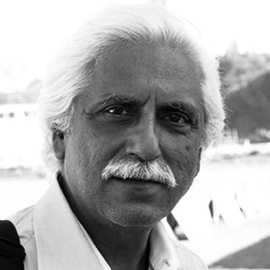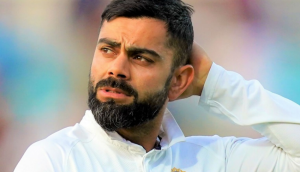Lalit Modi row: the 5 men who raised and ruined cricket

The flashpoint
- The latest Lalit Modi controversy is merely a symptom
- Commercialisation of cricket has ruined the game. It is governed by men who care about money and power, not the game
- Five powerful men are most responsible for the mess of cricket today
The perpetrators
- Jagmohan Dalmiya\'s policy of monetisation turned cricketers into commodities
- Sharad Pawar brought politics to the forefront of cricket administration
- N Srinivasan\'s desperation to hang on to power at any cost made fans disillusioned
- The support of Arun Jaitley and his political clout made Srinivasan more and more brazen
- Lalit Modi\'s wheeling and dealing created an atmosphere of sleaze and corruption around the IPL
The current controversy involving former Indian Premier League (IPL) chairman Lalit Modi, Minister for External Affairs Sushma Swaraj and Rajasthan chief minister Vasundhara Raje has sent the country's cricket and political establishments into a tizzy.
Fans can only watch helplessly and wistfully recall a time when cricket was simply a sport: for diehards, the greatest of them all.
But the current controversy is merely a symptom of something far more endemic: how cricket has been sullied by a series of high-profile politicians, businessmen and administrators.
Given how crucial cricket and politics is to Indian life, the meshing of the two was not entirely unexpected.
The problem really is how the affairs of the Board of Control for Cricket in India (BCCI) have evolved in the past two decades.
For more than six decades, Indian cricket had to rely on benefactors to support and administer it - whether royalty in pre-Independence days, or corporates after 1947, with a few families, especially from the south, being particularly benevolent.
But with the Indian economy opening up from 1991, the commercialisation of cricket happened at such a breakneck pace that the sport became the favourite hunting ground of those seeking pelf and power, often at the cost of scruples and probity.
Politicians quickly realised that cricket afforded a hook into massive money and power that they just couldn't ignore.
In step with this, Indian cricket has increasingly been overwhelmed by politicians, parties and political proteges of various hues, in the past two decades.
But of all those involved, it is the following five 'influencers' who are most responsible for making cricket the richest but also the least credible sport in the country.
Everybody believes that it is Lalit Modi who took Indian cricket to its current position of being the El Dorado of the sporting world - with all its dubious cascading benefits for everyone involved.
The IPL obviously provided the quantum jump, but the person who first saw the huge monetisation possibilities of Indian cricket was this Marwari businessman from Kolkata.
Dalmiya was the first to spot the premium value of telecast rights for Indian cricket after he negotiated the rights for the 1996 World Cup with Mark Mascarenhas's WorldTel.
The clamour for Indian cricket began in his reign, first as ICC president, then at the helm of the BCCI.
But while he fuelled the 'demand' for Indian cricket, Dalmiya also blunted the edge of the Indian establishment, so to speak.
The Players Association was rendered toothless, matches and tournament proliferated - several of them inconsequential.
[twittable]Dalmiya's commercialisation turned cricketers into commodities, instead of considering their health and safety[/twittable]
The ethos of Indian cricket was changing. Players had become mere commodities to be exploited for financial gain, even at the cost of ignoring fatigue and potential injuries.
Money, not the game itself, became the prime mover, and while it led to one of Indian cricket's most glorious periods on the field, the downfall of the game due to excessive monetisation had begun.
He was a surprise entrant into Indian cricket administration after the turn of the century. Nobody knew he was even remotely interested in the game, except those who knew that his father-in-law was Sadashiv Shinde, who had played seven Tests for India.
Pawar's arrival on the scene politicised the cricket establishment like never before. His prowess as a politician who never liked to lose was well-known.
Soon he fast-tracked himself to the BCCI presidentship, slaying Dalmiya with a charge of misappropriating funds. He was aided and abetted by the rising stars at the time: businessman N Srinivasan, who was treasurer, and Lalit Modi.
Subsequently, of course, the three fell out badly.
The IPL was born in Pawar's tenure, and propriety went for a toss as Srinivasan, despite being Board secretary, was allowed to own a franchise. The rules were written in a way so as to conveniently ignore the conflict of interest that would arise out of administrators holding commercial interest in the IPL. All of this was was with Pawar's blessing.
As BCCI president, Pawar also took a laissez faire approach. He was eager to rope in big-ticket players as aides, consultants or show ponies and was willing to pay good money for their services.
He had MAK Pataudi, Sunil Gavaskar and Ravi Shastri as part of the IPL governing council at a fee of Rs 1 crore each per year. This fee was removed after the 2010 crisis, which saw Modi being dumped by the BCCI.
By 2011, Pawar had already moved on to becoming the ICC president, having achieved the highest post in the sport in less than a decade of being in administration.
But by then, Indian cricket had become an open field for political warfare, and much weaker for that. If there is anyone who can be blamed for making cricket administration more about politics than the game or its growth, it is Pawar.
Srinivasan's rise to the BCCI presidency was not unexpected, given his long association with the game, but what happened after that makes for one of the most riveting chapters in modern cricket history.
Almost as soon as he assumed office, he fell out with Lalit Modi, his comrade-in-arms, and had him banished from the Board. Simultaneously, he also took up cudgels against Pawar and the BCCI president who preceded him, Shashank Manohar.
Srinivasan's tenure will be remembered for his ambition to retain power at any cost, to the detriment of the game's image in the eyes of those most important to it - the fans.
In the IPL betting and fixing scam which erupted in 2013, Srinivasan would have been untainted had the fire not started in his own backyard.
His son-in-law, Gurunath Meiyappan, who accompanied Chennai Super Kings everywhere, has confessed to being a betting man, following police investigations.
This left Srinivasan fighting a protracted but losing battle - certainly in public perception as well as in the court of law. He is now chairman of the ICC, but on a sticky wicket.
His diktats to the players and his cohorts to not speak to the media other than in the controlled environment of a press conference gave rise to a culture of secrecy, intrigue and 'sensational' leaks, which further distanced the fans from the game.
It was almost as though he didn't care who came to watch the game and how they felt about it - he had unshakeable belief that his product would continue to sell well, even if he didn't control its quality.
As India's performances on the field suffered, especially in Test matches abroad, and the controversies surrounding the IPL kept piling up, Srinivasan's inability - or, more seriously, unwillingness - to acknowledge the existence of the problem and find solutions left a bitter taste in the mouth.
Touted as the second most-powerful man in India today, he was also believed to be the most powerful man in Indian cricket. He has never been BCCI president, but that is because he has chosen national politics over cricket.
However, he is widely acknowledged as a king-maker.
He was the heft behind Srinivasan through the latter's worst crisis, and when it got to a point of no return, is believed to have worked out a compromise formula with Dalmiya as president now.
The one person he never got along with, ironically, was somebody close to his own party, the BJP - namely Lalit Modi.
Though Modi fell foul of the UPA, he found no succour from Jaitley, who supported Srinivasan. In many ways, Jaitley has left the BCCI in a rigmarole by keeping Srinivasan secured in a Teflon bubble through his unflinching support.
[fullsuite/]
Had Jaitley, who is known to be a master at reading political situations, acted while Srinivasan & co. were taking cricket's credibility down death row, there is no way issues could've got this far out of hand.
Jaitley cannot absolve himself from the fact that not a week goes by without some expose about cricketing corruption. While he may or may not have been an active participant, he is complicit through his implicit support of all that has gone wrong.
Lalit Modi, the man currently in the eye of the storm, has been a maverick genius. The IPL, by common consensus, not only popularised the game but raised the earnings for Indian cricket from millions into billions of dollars.
Young and ambitious, Modi used his energy, networking skills and vision to create a supra structure called the IPL. His big kick was that he always wanted to be in the centre of things, come what may.
This allegedly meant getting into deals that tested the laws of the land. More significantly, he was brazen enough to challenge the authority of the powers-that-be in 2009 - namely then-finance minister P Chidambaram - when he took the IPL to South Africa.
By 2010, there were several charges of impropriety brewing against him. He was alleged to have helped a consortium led by his brother-in-law, Suresh Chellaram, bag the Jaipur franchise (which became the Rajasthan Royals) and, depending on point of view, either turning a blind eye towards the all-pervading culture of greed and corruption that gripped the IPL, or being the prime mover of it.
[twittable]Modi made India cricket's El Dorado, but his wheeling and dealing left behind a legacy of sleaze and corruption[/twittable]
He would bend or even change the rules he himself had written just to suit his high-powered friends (such as Srinivasan, whose team he is alleged to have rigged an auction for), in order to prove to the world his own genius and that of his product.
Things came to a head after a fallout with central minister Shashi Tharoor, when Modi revealed the allegedly dubious shareholding pattern of a franchise Tharoor was associated with, and in which his then partner Sunanda Pushkar was a stakeholder - the Kochi Tuskers Kerala.
Modi fell out with the political establishment, and his constant links to scandals were too much for the BCCI to save face from. He was fired and banned by the same people who had benefitted the most from his wheeling and dealing.
He fled the country after enforcement agencies started investigating him for various financial offences.
The legacy he has left behind is an environment of distrust about the IPL. While always entertaining and a hit with cricket fans owing to its high-octane on-field action, the regular flow of controversies has built up an image of the IPL as a world full of sleaze and corruption, which it is still trying to shake off.
The views expressed here are personal and do not reflect those of the organisation.







![BJP's Kapil Mishra recreates Shankar Mahadevan’s ‘Breathless’ song to highlight Delhi pollution [WATCH] BJP's Kapil Mishra recreates Shankar Mahadevan’s ‘Breathless’ song to highlight Delhi pollution [WATCH]](https://images.catchnews.com/upload/2022/11/03/kapil-mishra_240884_300x172.png)

![Anupam Kher shares pictures of his toned body on 67th birthday [MUST SEE] Anupam Kher shares pictures of his toned body on 67th birthday [MUST SEE]](https://images.catchnews.com/upload/2022/03/07/Anupam_kher_231145_300x172.jpg)






